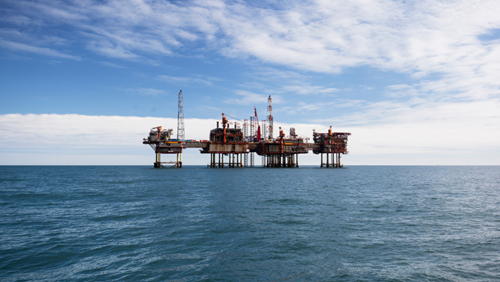Five key takeaways from the IEA’s updated Net Zero Roadmap
Read time: 4 minutes

Read time: 4 minutes

The International Energy Agency (IEA) have updated their landmark report, Net Zero by 2050: A Roadmap for the Global Energy Sector, originally published in 2021, as rooftop solar and clean energy growth light the way for climate progress.
The purpose of the report is to detail a possible pathway to net zero emissions by 2050, with suggestions as to how the energy sector, one of the world’s largest sources of greenhouse gas emissions, can achieve net zero and limit global warming.
Firstly, the IEA issues a stark warning about the challenge of capping global temperature increases at 1.5C. 2022 marked yet another year in which global emissions increased to a new record of 37 billion tonnes of CO2 emissions. as economies recovered from the Covid-19 pandemic and energy markets were interrupted by the Russian invasion of Ukraine.
Ultimately, the report warns that “the path to 1.5C has narrowed, but clean energy growth is keeping it open.” The prospect of a world capable of functioning within global warming limits is possible given the staggering growth of renewable energy and green investment, however much still needs to be done.
Here are the key takeaways from the report.
August 2023 was the hottest on record by a significant margin. Every year we face more and more real, observable examples of the impact climate change is having, with the severity of its consequences increasing.
The energy sector is responsible for a mammoth share of global emissions, so converting it to renewable energy and green technology sources and reducing demand for fossil fuels will mean it is still possible to achieve a net zero global energy system by 2050 on a 1.5C pathway.
The scenario explored by the report would also save $12trn in terms of energy system operating costs by 2050, concluding there would be universal access to modern forms of energy by 2030. Finally, the technologies required to deliver almost two-thirds of emissions reductions needed by 2050 already exist today, championing the case for transforming the global energy sector.
As the rollout of green technologies progresses, new projects reliant on coal, oil and natural gas will likely peak in the 2020s, even without any new climate policies being introduced. However, the report explains that to be compatible with global climate goals, governments must end fossil fuel investment and avoid the expansion of existing assets and approved projects to evade energy price spikes and cause further damage to the environment.
The report takes this analysis even further by calculating that £3.6bn has already been invested in fossil fuel infrastructure and projects that will likely result in net zero targets being breached. Ceasing fossil fuel expansion and reducing demand for oil, coal and gas by more than 25 per cent by 2030 and 80 per cent by 2050 is essential for net zero.


The UK government approved plans to expand North Sea Oil, despite succinct warnings from environmental organisations, climate scientists, and green leaders.
If fully implemented, currently announced manufacturing capacity expansions for solar PV and batteries would be sufficient to meet demand by 2030. The IEA has also declared that measures designed to promote the uptake of clean energy technologies is ramping up the supply of them. Boosting the supply of renewables and increasing electrification will be a key contributor to significant emissions reductions needed by 2030.
Scaling up renewable energy technologies is essential for cutting fossil fuel demand by over 25 per cent within this decade, and policies which promote and expand clean energy and reduce demand for fossil fuels will lead to a 35 per cent reduction in CO2 emissions generated by the energy sector in 2030 compared to 2022.
Furthermore, tripling global installed renewable energy capacity to 11,000 gigawatts by 2030 will generate the largest emissions reductions. Currently, advanced economies are developing strong policies which place them on track to lessen their contributions to global emissions, but policy support and green technology rollouts among emerging and developing economies is needed to level the global effort to reach net zero.
The IEA report details three key focusses which are critical worldwide for renewable energy growth and net zero progress.
Progress in the green technology sector has been significant, with technologies not currently available on the market accounting for around 35 per cent of emissions reductions needed for net zero by 2050 (which is lower than the 50 per cent detailed in the 2021 scenario).
Much of this momentum is concentrated on small, modular clean energy technologies such as solar PV, batteries, and EVs, but larger, smarter and repurposed infrastructure networks, low emission fuels, CO2 capture and storage technologies, more nuclear power, and large areas of land dedicated to renewables are required to drive progress even further.
The IEA’s report estimates that electricity transmission and distribution grids need to by expanded by roughly 2 million kilometres each year to 2030. In addition to this, carbon capture, utilisation and storage (CCUS), hydrogen fuels, and sustainable bioenergy are all in need of rapid progress in order to meet the needs of the NZE Scenario.
2023 is set to be a year of record investment in clean energy, with $1.8trn being invested. Though this level of investment is significant, it needs to increase to around $4.5trn a year by the early 2030s to align with the IEA’s pathway.
Enhanced international support for clean energy technologies, strong domestic policies, and systems which reduce demand for fossil fuels in developing nations is needed to support a net zero transition. In addition, annual concessional funding into clean energy for emerging markets and developing economies needs to hit around $80bn-$100bn by the early 2030s.
Before you can start your journey to net zero, it is important to understand where you are starting from. This guide explains all you need to know about carbon footprinting and how to measure this in your business.
What is meant by ‘Scope 3’ greenhouse gas emissions, why they are important and how can businesses begin to measure them as part of their carbon footprint?
What is meant by climate change targets that are ‘science-based’, why are they important and how can businesses follow a science-based pathway in their own carbon reduction plans?
There are a dizzying number of environmental standards and accreditations available to businesses today. In this guide, we take you through the key products to help you identify the most appropriate option for your business.
Net zero - what is it, why should you care and what can your business do about it?
Research shows that the carbon footprint of the average supply chain accounts for 90 per cent of a business's carbon footprint. In this guide we explore the steps businesses can take to be a green supplier of choice.
One of the simplest ways for you to reduce your impact on the climate is to switch your energy supply to renewable electricity, read our step by step guide.
When looking to reduce emissions from your operation, carbon offsetting appears an attractive quick fix. Here we explore how carbon offsetting works, when it can be effective and why it should be the final item on your carbon reduction to-do list.
Understand the principals of ‘corporate greenwash’ and why businesses need to be accurate, clear and transparent when promoting their environmental credentials.
Our teams offer support to help you reduce carbon, increase competitiveness and save money.
Based in Greater Manchester? Explore our fully-funded programmes.
Explore our training programmes to help you accelerate climate action, embed your environmental policy within your business and engage your team.
Contact us today to speak to a sustainability specialist, to help you improve the efficiency of your business, save money and reduce your carbon impact.
Share